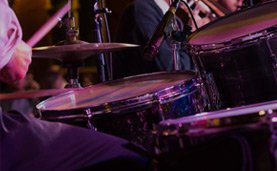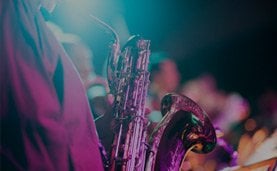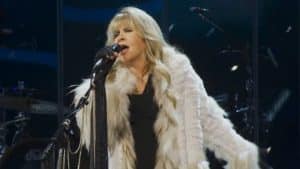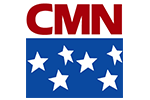15 Of The Greatest Guitar Intros Ever Made
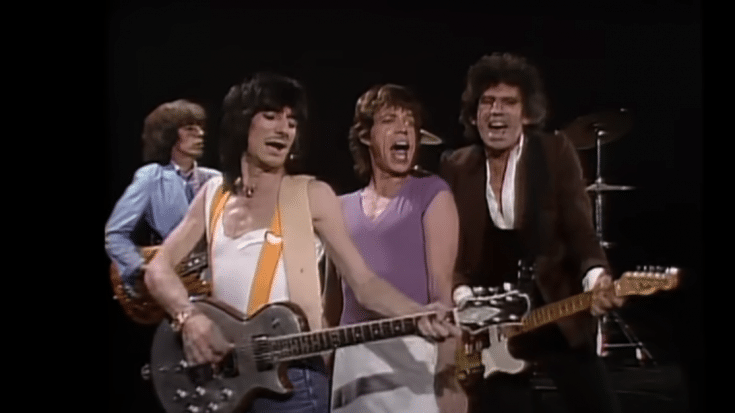
via The Rolling Stones/YouTube
Guitars matter—a lot. Without them, rock wouldn’t roar and pop would miss its edge. The right guitar intro doesn’t just start a song; it grabs you by the collar and pulls you in. With the perfect riff, artists have launched careers, made history, and inspired countless fans to pick up a six-string of their own.
So, here’s a list of 20 of the greatest guitar intros ever. No instrumentals—just iconic, unforgettable openings. To keep things balanced, we’ve limited it to one track per band (sorry, Led Zeppelin and Hendrix fans). There is one Beatles song and two solo Beatle entries—but each comes from a different member: Lennon, McCartney, and Harrison.
This list is a shout-out to those killer guitar hooks that sparked imaginations, set stages on fire, and made fans reach for the volume knob. And hopefully, these riffs will inspire a whole new wave of intro magic in the years to come.
“Slash N Burn” – Manic Street Preachers
The Manic Street Preachers came out swinging on their debut album, and “Slash N Burn” was proof they weren’t afraid to wear their influences loud and proud—Slash even gets a name-drop. The opening riff hits like a freight train, full of swagger and firepower, and it’s all James Dean Bradfield doing the heavy lifting. While Nicky Wire and Richey Edwards focused on the song’s biting lyrics, Bradfield unleashed a riff that felt like a two-guitar attack.
With that gritty tone and relentless energy, Bradfield doesn’t just play the riff—he owns it. His vocals cut through with just the right amount of urgency and emotion, making this one of those rare songs that sounds just as massive live as it does on record.
“And Your Bird Can Sing” – The Beatles
Few Beatles tracks match the guitar chemistry of “And Your Bird Can Sing.” George Harrison and Paul McCartney weave a dazzling dual-lead guitar riff, while John Lennon lays down a jangly rhythm that holds everything together. It’s one of the band’s most upbeat and infectious songs, packed with energy from the very first note.
Coming off Revolver, a record bursting with bold ideas, this track feels like pure fun—tight, melodic, and full of life. The riff is instantly hummable and one of the catchiest in the Beatles’ entire catalog. You can hear all three locking in, playing like the whole song depends on every single chord, and honestly, that’s part of what makes it so unforgettable.
“Deliver Your Children” – Paul McCartney & Wings
Denny Laine brought a fiery edge to Wings, much like George Harrison once did for The Beatles. Inspired by Django Reinhardt, Laine added a touch of flamenco flair to London Town’s standout track, “Deliver Your Children,” especially in the opening guitar section where bright, chiming riffs pull you right in.
“I lived in Spain for a while, took some flamenco guitar from there, so that gave it a bit of a different feel,” Laine shared in 2018. “Very me that song [‘Deliver Your Children’] and people like it.” He added simply, “I like Django Reinhardt.” That same influence later found its way into “Goodnight Tonight,” where Laine’s flamenco style helped shape one of Wings’ final—and finest—singles.
“A House Is Not a Motel” – Love
Like “Deliver Your Children,” this track begins with acoustic guitar, laying down sharp, rhythmic hooks before electric guitars burst in and shift the energy. It’s a rock tune that keeps things surprisingly understated at first, but the layered guitar work builds into a vibrant, elastic arrangement that rewards repeat listens. Featured on Forever Changes—Robert Plant’s favorite album and the one that helped The Stone Roses choose producer John Leckie—it’s often hailed as a late-’60s psychedelic masterpiece.
The song was written by Arthur Lee, who drew inspiration from Vietnam veterans. The line “call my name” was his tribute to those lost in combat, a reflection of the haunting stories he heard from returning soldiers. And in a fun bit of rock trivia, guitarist Johnny Echols once claimed that Jimmy Page got the idea for his double-neck guitar after seeing his.
“A Million Miles Away” – Rory Gallagher
Rory Gallagher had a way of channeling his Irish roots straight through his guitar. His longtime bassist Gerry McAvoy once said, “Rory played the blues, but he studied his craft. He was in the showbands: stagecraft came from the showbands. But I think there was a certain Irishness in Rory’s playing. Even when he was playing the blues licks, he would throw something Irish in there, which made it so unique. A lot of fellow guitar players at the time went, ‘Oh, that’s strange.’ I think that was part of Rory’s brilliance.”
You can hear it clearly in the opening of “A Million Miles Away”—Gallagher’s guitar sounds more like a fiddle warming up for a night of traditional reels. But once the bassline drops, the track shifts into full rock mode. It’s that seamless blend of Celtic soul and electric grit that makes the song so unforgettable from the first note.
“Freakin’ Out” – Graham Coxon
Graham Coxon often played in the background during Blur’s heyday, letting Damon Albarn and Alex James take center stage. But his solo work proved just how sharp and inventive he really was. He may not have been the flashiest guitarist, but his playing always packed emotional weight. Even Noel Gallagher—who famously wished AIDS on Albarn and James—had to admit Coxon’s musical genius, both privately and publicly.
“Freakin’ Out” stands out as one of Coxon’s most high-energy tracks. Its opening riff comes in hot and heavy, charging through the speakers like a punk-fueled echo chamber of tension and urgency. It’s raw, punchy, and full of anxious charm. The song plays like a modern tribute to the punk and post-punk scenes—something The Jam would’ve killed to write. But it was Coxon who brought it to life, and it remains a fierce highlight in his solo catalog.
“Heart Full of Soul” – The Yardbirds
Before he joined 10cc, Graham Gouldman was a young songwriter making waves with tracks like “For Your Love,” which he penned for The Yardbirds. Eric Clapton wasn’t a fan—thinking it veered too far from the blues—so he quit. Enter Jeff Beck, whose arrival took the band in a new, electrifying direction. With “Heart Full of Soul,” Beck pulled off a sonic trick by mimicking the sound of a sitar using a fuzzbox, laying the groundwork for future experiments by Led Zeppelin, Oasis, and The Stereophonics.
Producer Giorgio Gomelsky had originally wanted to use a real sitar after hearing Gouldman’s demo, but the results didn’t hit the mark. Beck’s fuzz-drenched guitar did the job instead, giving the track its now-iconic edge. While fans would have to wait for “Norwegian Wood” or “Paint It, Black” to hear the real thing, “Heart Full of Soul” opened the door with a bang.
“Helicopter” – Bloc Party
Kele Okereke once acknowledged a cinematic quality in Bloc Party’s sound. “It’s interesting that you say cinematic because I was listening to quite a lot of Ennio Morricone,” he told an interviewer. “And just the power of small kind of musical movements. With what I do with my band with Bloc Party, we’ve always been kind of pushed into this dramatic, grandiose place with how we write and how our songs make people feel.”
That vibe comes through loud and clear in “Helicopter,” especially in its sharp, twitchy guitar intro. The riff is fast, angular, and urgent—like a scene that refuses to slow down. From the first note, it cuts through with energy that’s raw, modern, and impossible to ignore. It’s one of the most defining guitar hooks of early 2000s British rock—bold, breathless, and buzzing with attitude.
“Animal Nitrate” – Suede
Bernard Butler once admitted that Nirvana’s Smells Like Teen Spirit helped inspire Suede’s “Animal Nitrate,” but from a guitar standpoint, this track takes things to another level. That opening riff crashes in with bold swagger, and Butler’s wild, restless guitar inflections give the song an edgy pulse that never lets up. At first, Brett Anderson wasn’t sold on the riff—but once it all came together, he delivered one of his most passionate vocals.
Suede’s debut album remains one of the most exciting releases of the ’90s, bursting with glam flair, sharp hooks, and raw emotion. “Animal Nitrate” captures the band at their most daring—tight, vibrant, and full of promise. Butler and Anderson only stuck together for one more album before parting ways. Years later, they reunited as The Tears, but as Anderson himself might admit, nothing quite matched the sheer energy and brilliance of “Animal Nitrate.”
“The Song Remains the Same” – Led Zeppelin
Eric Clapton, Jeff Beck, and Jimmy Page all had their turn in The Yardbirds, but it was Page who took things to another level with Led Zeppelin. Drawing from deep blues roots and layering in sweeping textures, Zeppelin created something fresh and powerful. “The Song Remains the Same” might be electric, but it’s packed with riffs that feel rooted in acoustic melodies.
Originally written as an instrumental, the track took on a new life when Robert Plant jumped in with a quirky falsetto, later switching to a bolder delivery to match John Bonham’s thunderous drums. Even decades later, when the band reunited in 2007, Plant dropped the key—but that fierce opening riff still hit with full force.
“Voodoo Chile” – Jimi Hendrix
What more can anyone say about Jimi Hendrix? He blew everyone away—yes, even Eric Clapton—and left us far too soon at just 27. But if you need a reminder of his genius, “Voodoo Chile” is it. From the moment it kicks in, the song feels like it’s creeping in from the shadows before exploding into something massive and electrifying.
Anchored by pounding drums, Hendrix dances between gritty rhythm work and screaming solos. His vocals may get lost in the haze, but let’s be real—nobody spins a Hendrix track just to hear him sing. It’s all about that guitar magic. The tone sizzles and stretches, shifting from loose rock to something that hints at the prog sounds to come in the ’70s.
More than just a song, “Voodoo Chile” became a jam-session centerpiece—Hendrix feeding off the crowd, letting the guitar speak louder than words ever could.
“Layla” – Derek & The Dominos
Of course Eric Clapton had to show up on this list—but here’s the twist: that iconic guitar hook on “Layla”? It wasn’t Clapton. It was Duane Allman of The Allman Brothers Band, channeling the dusty drama of a Sergio Leone western. Clapton’s role? Pouring his heart out with one of his most desperate, love-struck vocals, begging for a forbidden romance to become reality. The urgency in his voice adds fire to an already blazing track.
The song famously takes a left turn halfway through with a haunting piano section—so stunning it could’ve been a song of its own. Clapton and Allman subtly weave their guitars around it, letting the keys take center stage. That dreamy second half? It later found a second life in Goodfellas, scoring one of the film’s most unforgettable scenes. But that’s another story for another countdown.
“Should I Stay or Should I Go” – The Clash
From the first note, this Clash anthem hits the gas and doesn’t let up. “Should I Stay or Should I Go” became the band’s biggest hit, thanks not to the lyrics or even the bilingual backing vocals—but that jagged, driving guitar riff that kicks the whole thing off. Mick Jones handles lead vocals, but it’s the raw, choppy rhythm guitar that steals the spotlight.
When the guitars pause, the pounding drums roll in, showing just how crucial drummer Topper Headon was to the band’s sound. His departure marked the beginning of The Clash’s decline, and when Jones exited before Cut the Crap, the result lived up to its name. Still, this riff remains one of punk’s catchiest—and most enduring.
“What Is Life?” – George Harrison
The opening riff of “What Is Life?” bursts in with the spirit of Motown, setting the tone for one of George Harrison’s most joyful and heartfelt tracks. That big, brassy hook drives the whole song, with layers of strings and horns adding extra color and momentum. Harrison, joined by Eric Clapton, crafted a guitar part that was as emotional as it was catchy—letting the instrument do most of the talking, knowing full well his voice had its limits.
Keyboardist Bobby Whitlock credited producer Phil Spector for shaping the energy of the session. “The real show in that whole place was Phil Spector – what a funny guy. He’s not too funny now, but then… I thought, they’ve got all these mics out here catching us jamming, where they need a mic is on the inside,” he said. “He’s just eccentric, he’s real creative.”
“Whiskey In The Jar” – Thin Lizzy
Before they became known for their twin-guitar anthems, Thin Lizzy started out as a power trio, channeling the vibes of Hendrix and Cream. While that early version didn’t fully click, they struck lightning with their fiery take on the Irish folk classic “Whiskey In The Jar.” It was an unexpected hit, fueled by Phil Lynott’s gritty acoustic strumming and Eric Bell’s razor-sharp electric riff that cuts through with wild intensity.
Bell’s guitar opens like a gunslinger loading his weapon—testing the strings, building tension—before launching into a full-blown charge. That explosive intro set the tone for the band’s transformation, turning a traditional pub song into a rebellious rock anthem. They didn’t just update a classic—they reinvented it, giving it the swagger and edge that the era demanded. Thin Lizzy may have evolved, but this was the moment they proved they could make old tales feel brand new.
“I Bet You Look Good on the Dancefloor” – Arctic Monkeys
Calling it “the greatest debut single of all time” isn’t just hype—it’s earned. Arctic Monkeys hit the scene like a flashbang, with a sound that felt both totally fresh and instantly relatable. “I Bet You Look Good on the Dancefloor” didn’t just launch a band—it reignited guitar-driven rock and gave voice to a whole generation of restless, sharp-tongued teens.
The band’s arrival felt like a well-timed heist, stealing attention from every corner of the industry. People questioned the buzz, but one listen made it clear—this wasn’t luck. It was lightning in a bottle. From the very first riff, Alex Turner’s guitar hooks you, and suddenly, you’re in the middle of a whirlwind anthem.
So many fans still sing every word, but just as many can hum that electrifying intro by heart. It’s not just a song—it’s a moment burned into the brain.
“Johnny B. Goode” – Chuck Berry
There’s no question about it—Chuck Berry’s fiery guitar intro to “Johnny B. Goode” changed music forever. With just a few electrifying notes, Berry kicked off not just a song but an entire movement. That opening riff was pure adrenaline, and it still makes people jump to their feet decades later. As John Lennon once said, “If you tried to give rock and roll another name, you might call it Chuck Berry.” And this was the tune he had in mind.
“Johnny B. Goode” has become a multigenerational party starter—the kind of track that pulls grandparents, kids, and everyone in between onto the dancefloor. Whether it’s a twist, duckwalk, or wild spin, the groove is infectious. Berry believed in writing music that made people move, plain and simple. If it didn’t make you want to dance, he’d probably wonder, “What’s the point?” And honestly, he had a good point.
“You Really Got Me” – The Kinks
For years, people thought the legendary riff on “You Really Got Me” was played by Jimmy Page—but nope, it was all Dave Davies. That gritty, jagged hook—dan dan dan…dan dan dan…dan dan dan dan—hits hard from the jump and doesn’t let up. It’s raw, it’s wild, and it pretty much laid the groundwork for heavy metal. No wonder Pete Townshend and Ozzy Osbourne couldn’t get enough of it.
Even Eddie Van Halen gave it a spin with his band’s high-octane cover, but nothing quite matches the punch of the original. Oddly enough, The Kinks didn’t stick with that hard-edged sound for long. Instead, they shifted toward more lyrical, quirky storytelling inspired by their English roots. Still, as different as their later music became, “You Really Got Me” remains their most explosive—and unforgettable—track.
“Purple Rain” – Prince
Prince wasn’t just a show-stopping performer—he was a guitar genius. Just watch his jaw-dropping solo at George Harrison’s Rock and Roll Hall of Fame induction, where he tore through “While My Guitar Gently Weeps” with the kind of flair that made Eric Clapton’s original seem tame. But if you really want to hear Prince at his most powerful, it’s right there on “Purple Rain.” The title track is a masterclass in dynamics, with soaring guitar licks that feel like emotional lightning bolts.
Still, it’s not the blazing solo that grabs you first—it’s that gentle, haunting intro. It’s soft, precise, and full of feeling. Those sparse arpeggios don’t just set the mood—they build a slow-burning tension that makes the big moments hit even harder. There’s real beauty in how it holds back before the drums crash in and the emotion comes pouring out. It’s simple, yes—but totally unforgettable.
“Gimme Shelter” – The Rolling Stones
If you were wondering where The Rolling Stones were hiding on this list—here they are, right at the top. And rightfully so. The opening of “Gimme Shelter” isn’t just iconic—it’s electric. I’m not saying it’s the greatest riff ever or that Keith Richards is the best guitarist (he’s arguably not even the best in the band), but as far as intros go, this one delivers unmatched mood, tension, and atmosphere.
With Mick Jagger’s piercing falsetto and a brooding sense of urgency, the track feels like rock and roll opera—just without the tuxedos and velvet curtains. The drama is baked into every second of that eerie, spiraling riff.
Even more impressive? Richards played all the guitar parts himself—and possibly even the bass. Onstage, Ronnie Wood usually picks up the second guitar, giving Keith the space to dive into that unforgettable opening hook. It’s Richards at his most spellbinding.



